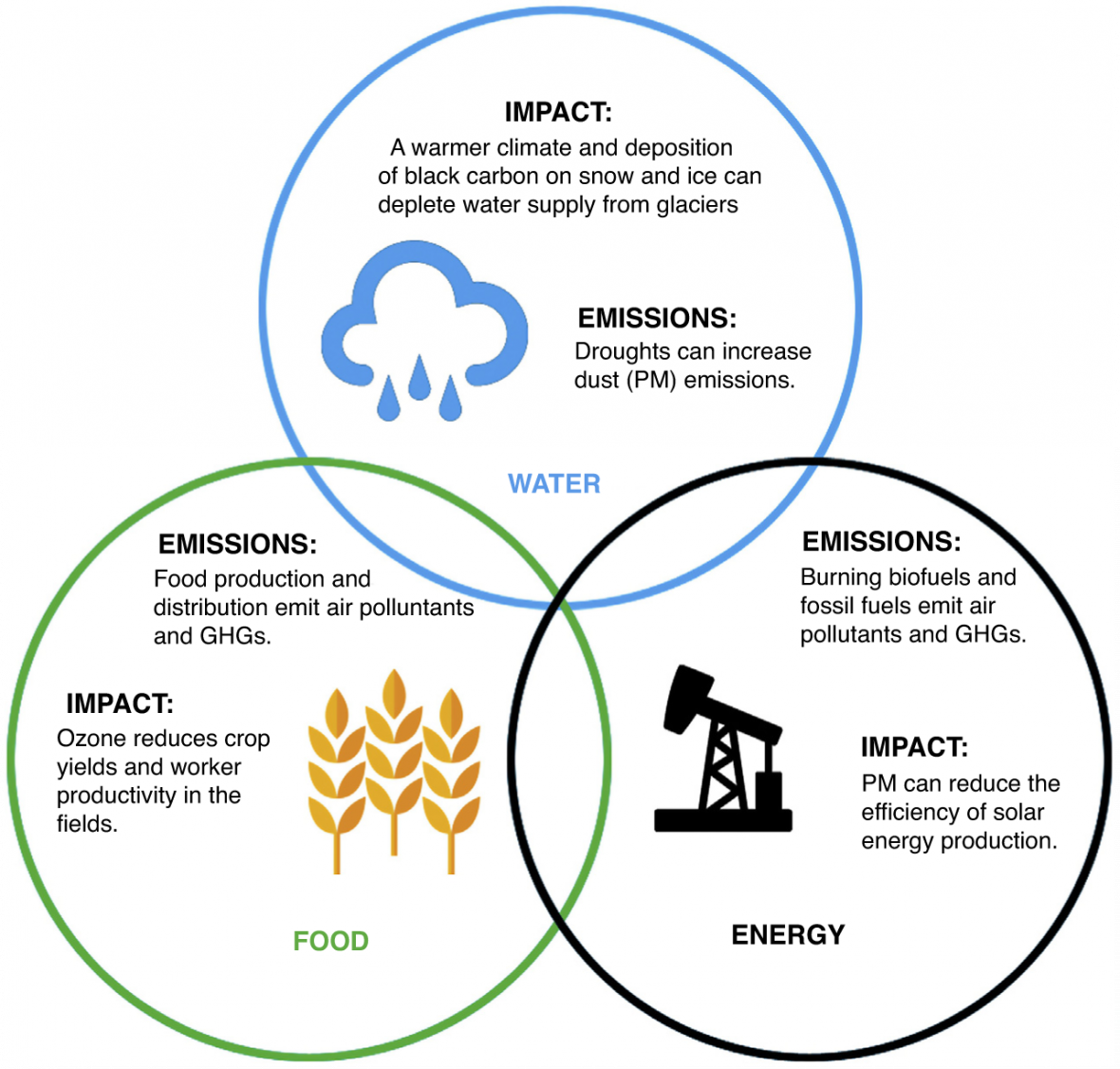Headline:
Addressing Air Quality and Climate Change: Key Considerations for Decision-makers

From their emission sources to their impacts on climate, human health, and ecosystems, air quality and climate change are inexorably linked. But this connection is frequently disregarded in policy-making. In an effort to encourage policy- and decision-makers to adopt a more integrated perspective, atmospheric scientists Megan L. Melamed (University of Colorado), Julia Schmale (Paul Scherrer Institut) and Erika von Schneidemesser (IASS) outline three key considerations to guide policy design in a paper published in the journal “Current Opinion in Environmental Sustainability”.
“This paper is intended as a contribution to the development of an integrated approach to addressing air quality and climate change. These linkages are still frequently neglected in both research and the development of policy measures,” explains IASS researcher Erika von Schneidemesser. Adopting a more integrated approach could help to reduce unintended consequences and deliver additional environmental and economic benefits.
Mix of emissions, lifetimes, benefits and trade-offs as key criteria
The three key considerations identified by the authors are the mix of emissions, their atmospheric lifetime, and the benefits and trade-offs of policy measures.
- From heating to transportation, a broad range of human activities results in the emission of air pollutants and greenhouse gases. Reductions in the emissions of a particular pollutant, for instance through the introduction of new technologies, invariably affects other emissions from the same source. But these effects have not always been taken into account by policy-makers. For example, efforts by the European Union to reduce carbon dioxide emissions by promoting combined heat and power plants and decentralized power generation resulted in an increase in the number of small combined plants located in urban areas. Laxer restrictions on the emission of air pollutants by smaller plants led to rising levels of air pollution in urban areas as a consequence. In light of this, the authors recommend that decision-makers consider the overall mix of emissions from individual sources in order to gauge the potential impacts of proposed measures on climate, health and ecosystems.
- The atmospheric lifetime of CO2 and other greenhouse gases can range from a decade to a century or more, and their climate impacts are global as a result. Air pollutants, on the other hand, typically have lifetimes that last from hours to months, resulting in local to regional scale impacts. The atmospheric lifetime of these emissions is critical to the efficacy of measures to reduce emissions. An example presented by the authors illustrates the complexity of these relationships: in various regions across Asia the high concentration of particulate matter containing sulfate aerosols which reflect sunlight back into space has a cooling impact on the climate. Measures to improve air quality could therefore result in a rise in temperature across the region of 2 °C by the end of the century.
- Policy options aiming to address a single issue, such as climate change, often have unintended benefits and trade-offs. One example offered by the authors is the burning of biomass as a heat source in homes. Although the resulting net carbon dioxide emissions are lower compared to fossil fuels, more air pollutants are emitted into the atmosphere at the same time. The development of policy measures should therefore be guided by more comprehensive impact assessments.
More agreements to regulate air quality and climate impacts
Decision-makers must consider all three aspects if they wish to better understand how different policy options are likely to influence the climate, human health, and ecosystems, the authors emphasise. They draw on the example of the Water-Energy-Food Nexus (see illustration) to show how decision-makers could develop an integrated approach to policy design. In this example, the authors show how human activity across the domains of water, energy, and food contributes to emissions of air pollutants and greenhouse gases, and how air quality and climate change in turn impact on water, energy, and food.

The number of regional, national, and global agreements and policies addressing environmental change and sustainability issues is likely to increase in the coming years, the authors explain. Many of these agreements will seek to regulate air pollutant and greenhouse gas emissions. Although improving air quality and mitigating climate change may not be the primary goal of many associated measures, by taking into account the mix of emissions, lifetime, and benefits and trade-offs, more comprehensive sustainable policies can be developed to maximize the benefits for air quality and climate change mitigation.
Melamed, M. L., Schmale, J., von Schneidemesser, E. (2016): Sustainable policy—key considerations for air quality and climate change. - Current Opinion in Environmental Sustainability, 23, Open Issue, Part I, pp. 85-91.

